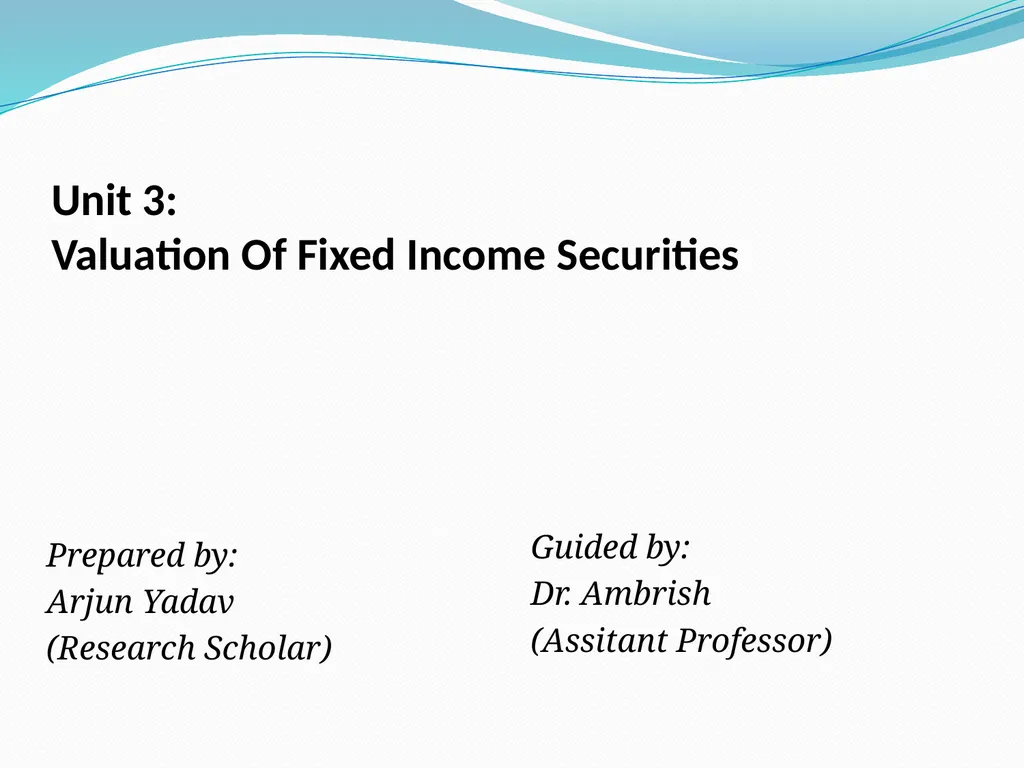
Unit 3: Valuation Of Fixed Income Securities
Author: lindy-dunigan | Published: 2025-06-27
Description: Unit 3: Valuation Of Fixed Income Securities Prepared by: Arjun Yadav (Research Scholar) Guided by: Dr. Ambrish (Assitant Professor) Characteristics Of Fixed Income Securities (Debt And Preferred Stock) Meaning: Fixed income securities are
Download Presentation
Download the PPT/PDF: Download
Transcript:
Loading transcript…